Feeding cucumbers with potassium
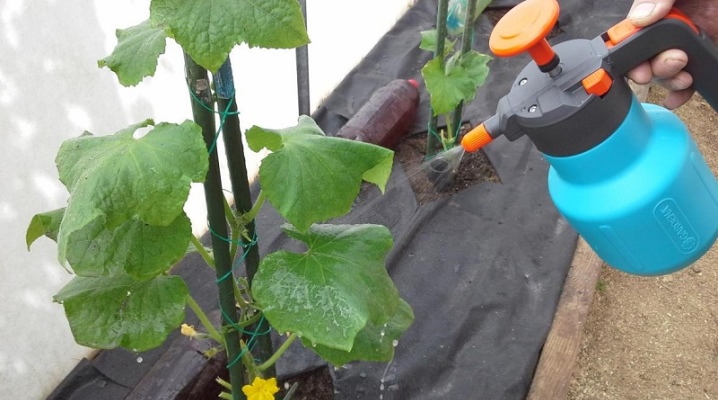
Potassium is called one of the main fertilizers required for successful cultivation of cucumbers. In order for the microelement to bring maximum benefit, it should be applied in accordance with the feeding plan and always according to the instructions.
Potassium properties for cucumbers
The cultivation of cucumbers is almost never complete without the introduction of potash dressings. Gardeners appreciate this microelement for its ability to improve the taste characteristics of fruits, eliminate bitterness, as well as increase the number of ovaries and the volume of the future harvest. Potash fertilizers activate the processes of protein-carbohydrate metabolism and accelerate photosynthesis.
Regular feeding helps cucumbers to better endure dry and frosty periods, strengthen their immunity and increase keeping quality - that is, storage capacity. It is worth mentioning that regular "consumption" of potassium will help the crop to protect itself from pest attacks.
For the development of cucumbers to be successful, potash dressings should be enough for the entire growing season.
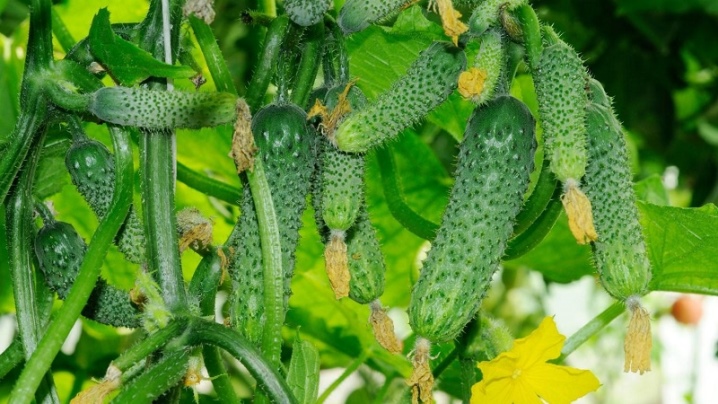
Signs of shortage
The lack of potassium is usually easily "read" by the external changes in cucumbers. In such a plant, whips and leaves are actively growing, but greens are formed in an inaccurate pear-like and hook-shaped shape. The shade of the foliage changes to dark green, and their border turns yellow. Sometimes the leaf plate takes on a bluish tone.
Over time, nitrogen accumulates in plant tissues, and the aerial part of the bush is dehydrated by toxins. An increased concentration of ammoniacal nitrogen leads to the gradual death of tissues. Bitterness accumulates in the pulp of cucumbers, ovaries with leaves disappear, and the number of male flowers significantly prevails over female ones.
By the way, with a lack of potassium in the bushes, the old leaves first die, then the young ones, and then the flowers themselves.
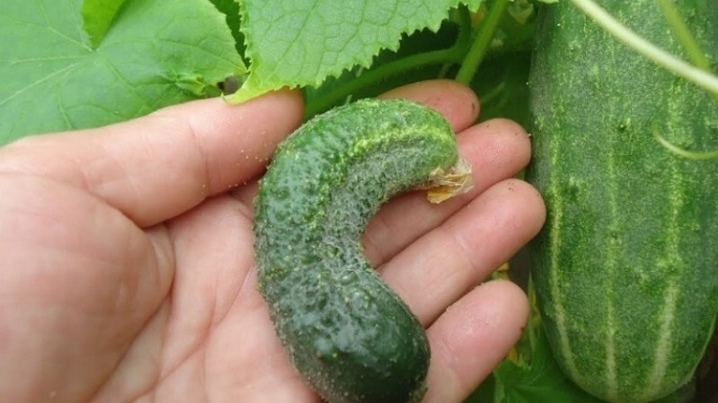
Fertilizers
All potash fertilizers are usually divided into chloride and sulfate, and the latter are most often supplied to the market in the form of miniature grains.
Potassium humate
The best potash fertilizers, of course, include potassium humate. It contains numerous humic acids and other nutrients. For feeding cucumbers, the drug can be purchased both in liquid and dry form. The introduction of this agent improves the composition of the soil, accelerates the formation of the cucumbers themselves and reduces the amount of nitrates in their composition. The yield of the culture is growing significantly, and it itself is stored much longer.
Such processing is carried out three times during the growing season, and to create a solution, 110 milliliters are diluted in a ten-liter bucket of water. It is important to mention that it is forbidden to introduce potassium humate simultaneously with phosphorus and potassium nitrate in order to avoid the formation of insoluble substances.
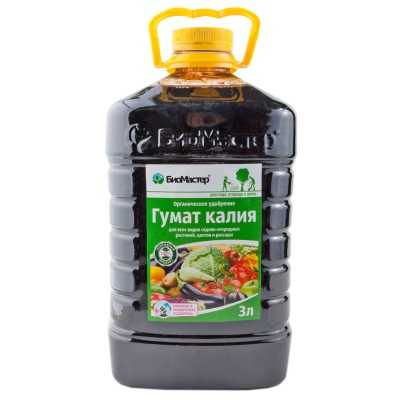
Potassium salt
Potassium salt is a mixture of potassium chloride, sylvinite and kainite. The drug is used before planting cucumbers in spring or in autumn, when the site is cleared of harvest. As a rule, 35 grams of potassium salt has to be scattered to process each square meter. During the growing season, this potash fertilizer is not allowed to be used.
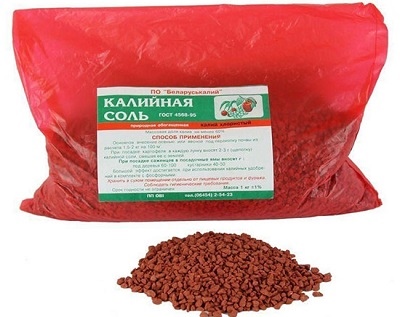
Potassium monophosphate
Potassium monophosphate refers to an easily soluble fertilizer that looks like a scattering of white crystals. It contains 40% potassium directly and 60% phosphorus. The use of this top dressing has a beneficial effect on the quality of the crop and lengthens its shelf life. In addition, the fertilizer provides additional protection against fungal diseases. The use of potassium monophosphate is possible under certain conditions.
So, in autumn, it should not be used as a dry mixture. It is important to use a diluted solution immediately, otherwise it will lose its beneficial properties. In addition, we must not forget that fertilization activates the germination of weeds, and therefore should be accompanied by regular weeding. Potassium monophosphate can be administered 3-4 times during the growing season.
Best of all, cucumbers perceive foliar feeding, and 10 grams of dry matter is diluted in a bucket of water.
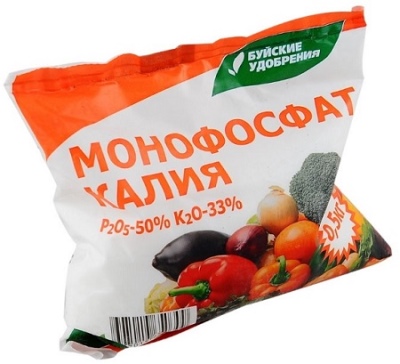
Kalimagnesia
Kalimag contains magnesium, potassium and sulfur inclusions among its constituents. Fertilizer looks like a dry mix of pink-gray granules. It rapidly breaks down in water, which makes it possible to uniformly saturate the soil with useful substances. The introduction of potassium magnesium increases the number of fruits, improves the taste of cucumbers and accelerates the ripening process of the culture. In addition, the culture strengthens its immunity, and the periods of fruiting increase.
For cucumbers, it is customary to use the liquid form of the drug, and when choosing a dry mixture, reduce the dosage. In autumn, fertilizer is applied in an amount of 200 grams per square meter, and in spring - 110 grams for the same area. A weakly concentrated solution is also suitable for foliar application.
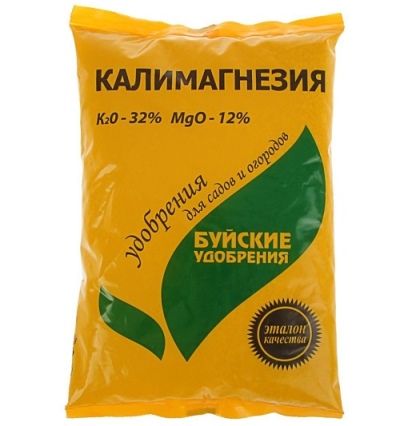
Vitriol
Copper sulfate not only nourishes the soil, but also increases the likelihood of plant resistance to the most common diseases. Most often, the drug is used on sandy and peaty soils. Top dressing is carried out in autumn and spring in the amount of 1 gram per square meter of soil.
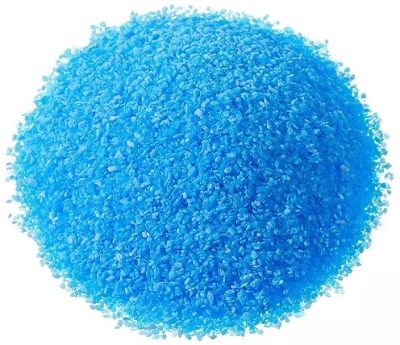
Potassium nitrate
Potassium nitrate can easily be called a universal top dressing, suitable not only for cucumbers, but also for other crops.... It goes on sale in the form of a white powder, which is soon diluted in water. A mixture of potassium and nitrogen, which are the basis of the top dressing, helps to accelerate crop growth, strengthen immunity and improve yields. To prepare a liquid solution, 20 grams of the substance are diluted in a bucket of water. The resulting mixture is used for inter-row spacing twice a season.
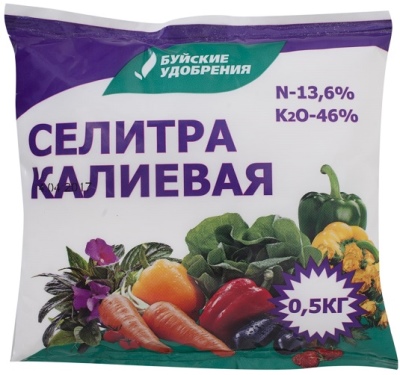
Potassium sulphate
Finally, potassium sulfate, which also contains magnesium, sulfur and calcium, has a beneficial effect on cucumbers. The snow-white powder can be scattered on the beds, or bred and used for irrigation. Usually in spring and autumn, preference is given to the dry form of the drug, and during the growth of cucumbers, a liquid mixture is used. It will also be useful to organize spraying of the crop during flowering.
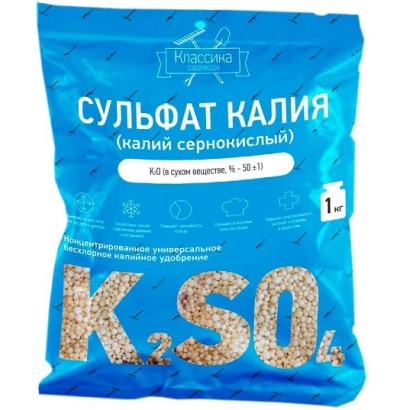
Terms of introduction
Potassium should be in the cucumber beds already during planting. It is better to start in the fall, when the crop is harvested, using dry or diluted potassium sulfate. Such feeding is vital if the garden is located on heavy or dense soils. If the plot could not be processed before wintering, then to fill the deficit, this should be done in the spring, somewhere 3-4 weeks before planting seeds or the appearance of seedlings in the beds.
Once the plants have formed, they can be moistened with potassium at the root using a mineral complex containing this ingredient. The next time potassium is added during the flowering stage. When the cucumber begins to form ovaries, it will be better to use foliar dressing. During the fruiting period, root and foliar dressings are combined.

How to breed?
Diluting potash fertilizer is not particularly difficult. For root treatment, 2-3 tablespoons of the balls are poured into 10 liters of water and mixed until the substance becomes homogeneous.For spraying the plantings, a solution of a lower concentration will be required - for the same amount of water, 1.5-2 tablespoons of granules are needed.
It is worth mentioning that many gardeners prefer to feed cucumbers with solutions based on folk remedies, which, of course, are prepared according to individual schemes. So, diluting mullein or bird droppings in a bucket of water, 5 grams of superphosphate and the same amount of potassium sulfate should be added to the mixture.
The ready-made mixture is suitable for feeding carried out at the first stage of the vegetative development of the crop.
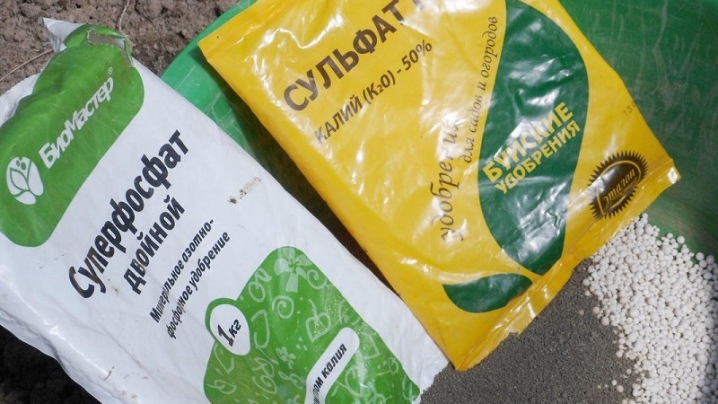
How can you deposit?
There are two main ways to feed cucumbers at home: root and foliar... This is relevant for specimens growing both in open ground and in a greenhouse. The difference lies only in the choice of preparations: any fertilizers are suitable for open ground, while potassium salt, sulphate and potassium chloride are recommended for the greenhouse.
Root dressing
The use of root dressing for cucumbers is considered basic... It should be carried out after rains or generous watering, choosing non-sunny days or evening hours. The nutrient solution should be warmed up to +20 degrees. This method allows you to quickly deliver nutrients to the root system of the culture. You can feed cucumbers with dry and liquid additives, and the former are simply scattered over the territory and dug up along with the soil, and the latter are poured into the aisles.
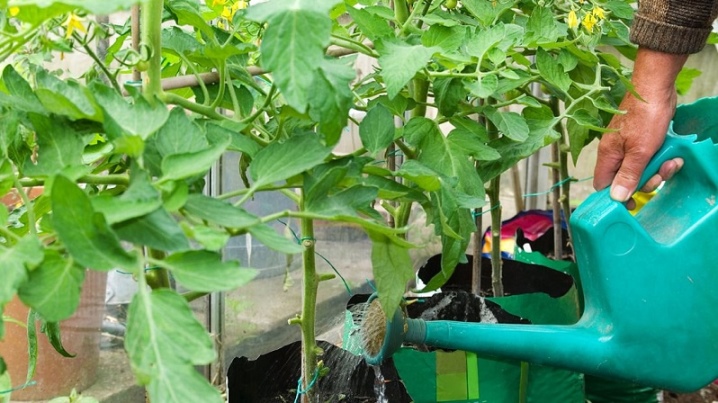
Foliar dressing
Additional - foliar feeding is carried out under the same conditions as root, although it is best to carry it out on cool summer days... To carry out this treatment with your own hands, you need to fill the sprayer with a useful mixture and process the stems and leaves with it.
Despite the fact that root top dressing is usually enough for cucumbers, foliar is indispensable when growing cucumbers on heavy soil.

For information on how and when to make potash feeding for cucumbers, see the next video.













The comment was sent successfully.